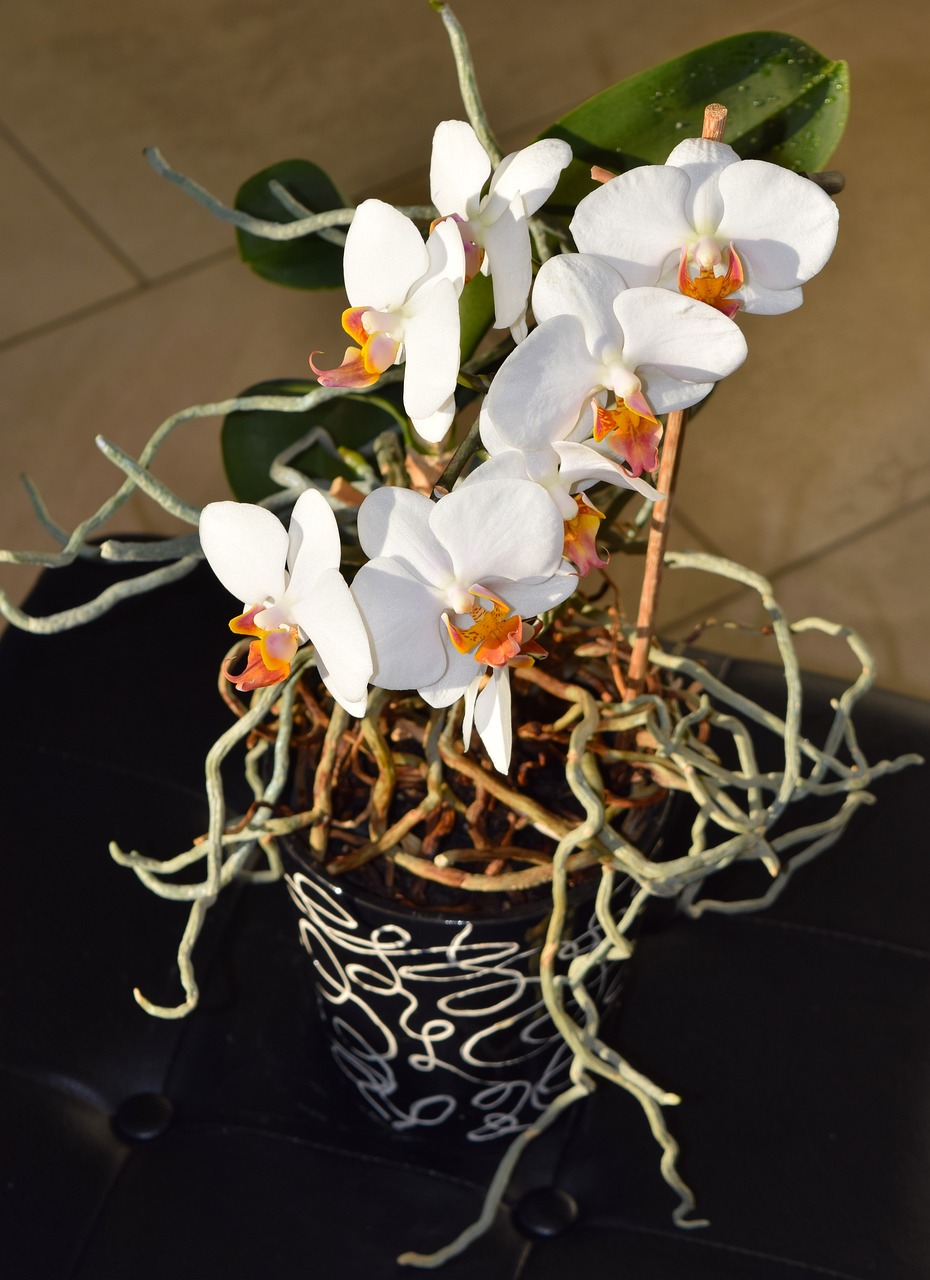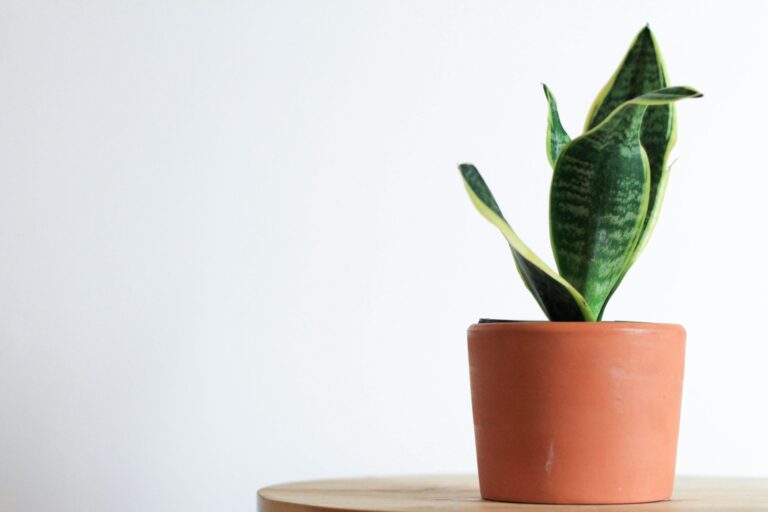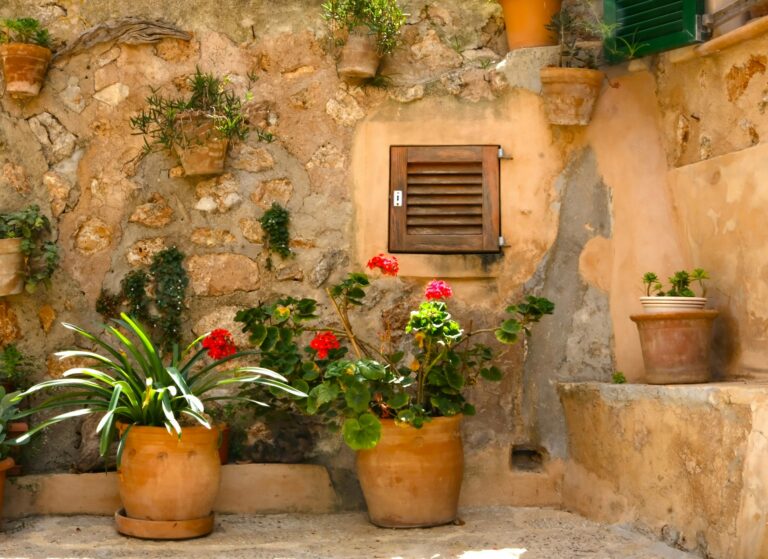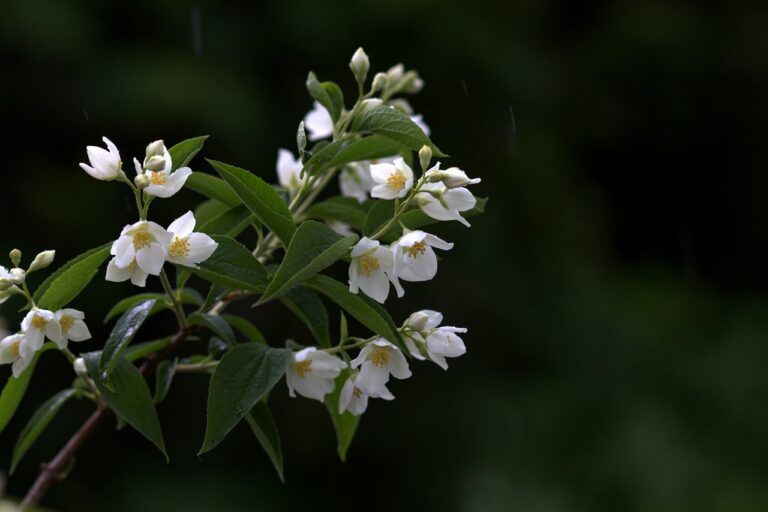Growing bare root orchids without a pot is a unique and rewarding experience that can yield beautiful and healthy plants. It’s a technique that has been used for centuries and is still popular today. Without a pot, the orchid’s roots can grow freely and absorb nutrients from the air, resulting in stronger, healthier plants.
To grow orchids without a pot, you’ll need to select a suitable location. Orchids thrive in humid environments, so choose a warm and moist spot. A bathroom or kitchen with a window receiving indirect sunlight is ideal. Once you’ve found the perfect spot, you can prepare the orchid for planting.
Understanding Bare Root Orchids
Characteristics of Bare Root Orchids
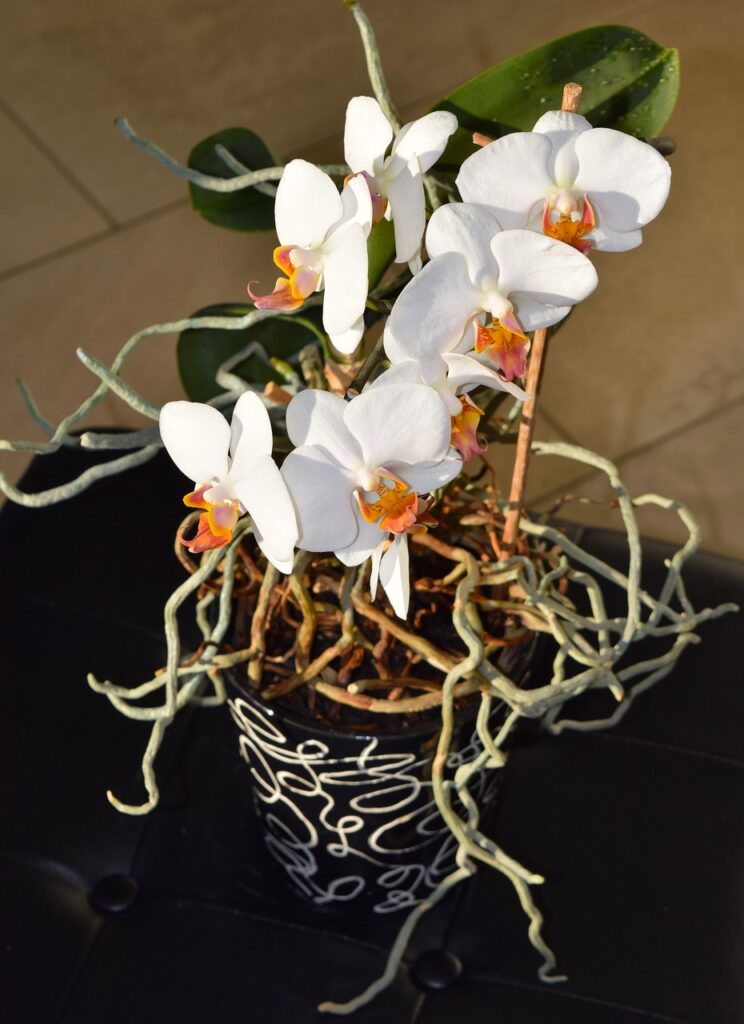
Bare root orchids are orchids that have been removed from their pots and have had all the potting material removed from their roots. They are sold with their roots exposed and are usually wrapped in moist paper or sphagnum moss to keep them hydrated. Bare root orchids are often sold during the dormant season and can be a great way to save money on orchids.
Bare root orchids have several characteristics that set them apart from potted orchids. Firstly, they are lighter and easier to transport. Secondly, they are more susceptible to drying out, so they require more frequent watering. Thirdly, they have a more fragile root system, meaning they must be handled with care.
Benefits of Growing Bare Root Orchids
Growing bare root orchids has several benefits. Firstly, it is cheaper than buying potted orchids. Bare root orchids are often sold at a lower price than potted orchids, and you can save money on shipping costs because they are lighter and smaller.
Secondly, bare root orchids are easier to transport. They take up less space and are less likely to be damaged during transport.
Another benefit of growing bare root orchids is that they allow you to see the plant’s root system. This can help diagnose any problems with the plant, such as root rot or insect infestations. Bare root orchids also allow you to customize the potting mix to suit the plant’s needs.
Preparation for Planting
Before you begin planting bare root orchids without a pot, there are a few things you need to consider. This section will guide you through the preparation process.
Selecting the Right Orchid Species
The first step in growing bare root orchids is to choose the right species. Not all orchids can be grown without a pot, so research before selecting a species. Some orchids that can be grown without a pot include:
- Phalaenopsis
- Dendrobium
- Cattleya
- Vanda
- Oncidium
Once you’ve chosen the species, research the specific care requirements for that orchid. Different species have different needs regarding light, water, and nutrients.
Gathering Necessary Supplies
After you’ve chosen the right orchid species, it’s time to gather the necessary supplies. Here’s what you’ll need:
- Orchid bark or sphagnum moss
- Scissors or pruning shears
- A container for soaking the orchid roots
- A clean, sharp knife
- A stake or support for the orchid (if necessary)
It’s important to ensure all your supplies are clean and sterile before you begin planting. This will help prevent the spread of disease and ensure the health of your orchid.
Planting Process
Initial Placement of Orchid
When planting bare root orchids without a pot, find a suitable location for your orchid. The location should be well-lit but avoid direct sunlight. You can place your orchid on a flat surface, such as a piece of bark or a wooden board. Make sure the surface is clean and free of any debris.
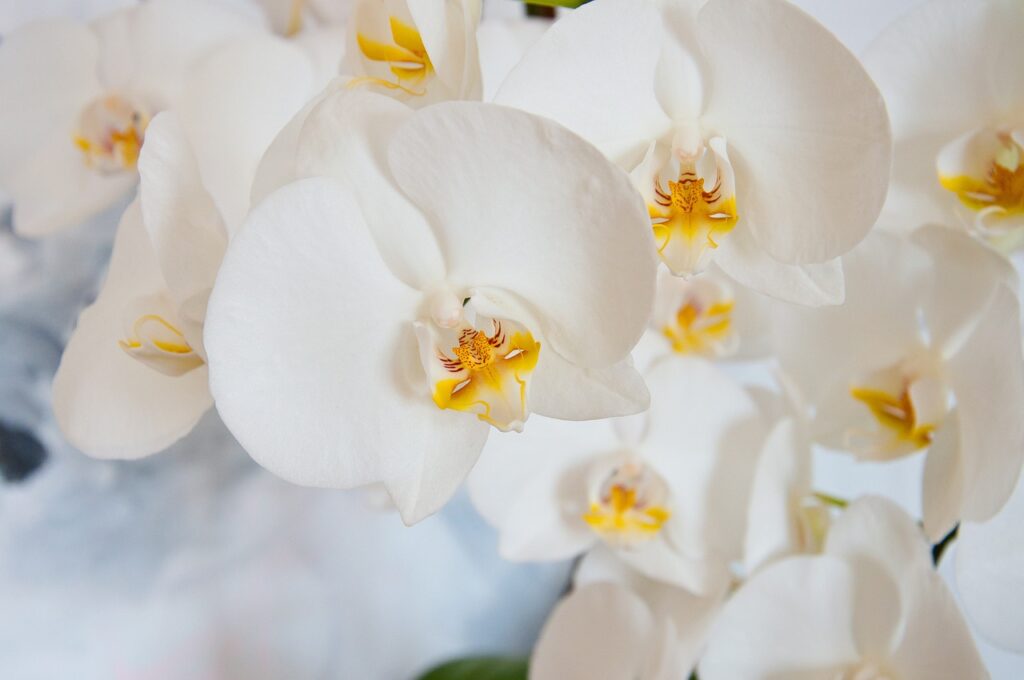
Next, place the orchid on the surface with its roots spread out. Make sure the roots are in contact with the surface. You can use a small amount of sphagnum moss or coconut coir to hold the orchid in place.
Feeding and Watering Regimen
Bare root orchids require a feeding and watering regimen to ensure their growth and health. You can use a liquid fertilizer specifically designed for orchids. Dilute the fertilizer as directed and apply it to the orchid once a week.
When it comes to watering, you should water your orchid once a week. You can use a spray bottle to mist the leaves and roots with water. Make sure the water reaches the roots.
It is important to avoid overwatering your orchid, as this can lead to root rot. Ensure the surface you placed your orchid on is dry before watering it again.
Ongoing Care
Light and Temperature Requirements
To ensure your bare root orchids thrive without a pot, you must provide them with proper lighting and temperature requirements. Orchids grown indoors need plenty of bright, indirect light to grow properly, so place them near a window with plenty of natural light. However, be careful not to expose them to direct sunlight, which can scorch their leaves.
In terms of temperature, most orchids prefer a warm, humid environment. Aim to keep the temperature between 65 and 80 degrees Fahrenheit during the day and no cooler than 60 degrees Fahrenheit at night. If your home is particularly dry, you may need a humidifier to keep the air moist enough for your orchids.
Pruning
Regular pruning is an important part of caring for your bare root orchids. Cut back any dead or damaged leaves or stems as soon as you notice them, using a clean pair of scissors or pruning shears. This will help prevent the spread of disease and keep your orchids looking healthy and vibrant.
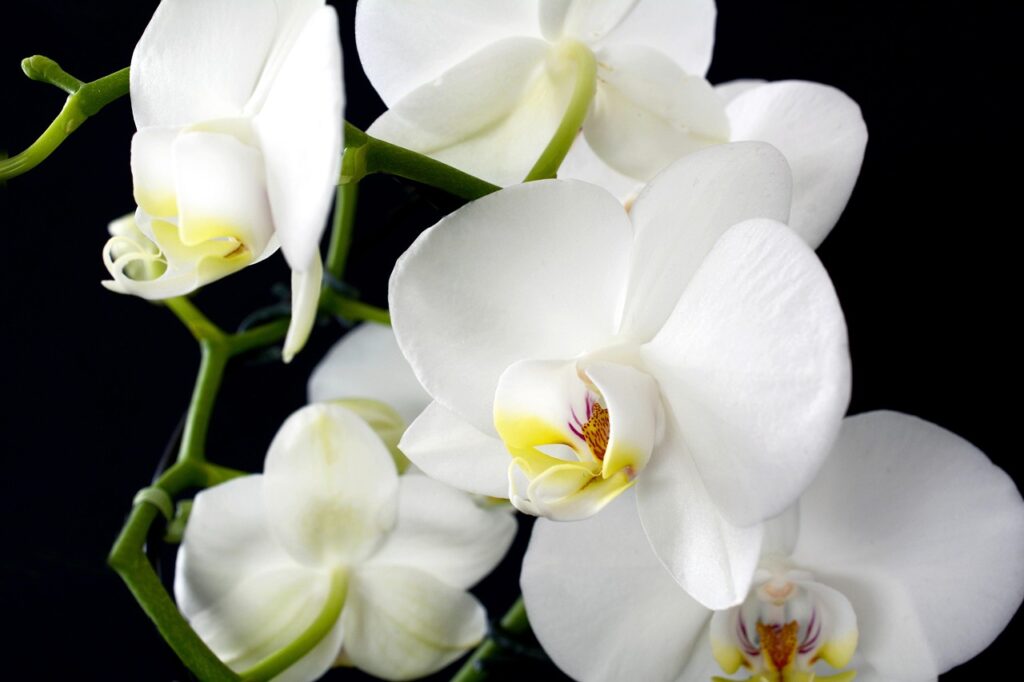
Repotting
Although you don’t need to use a pot to grow bare root orchids, you may need to repot them occasionally. This is especially true if the orchid outgrows its current container or the potting material becomes too compacted.
When repotting, be sure to use a well-draining potting mix that is specifically formulated for orchids. You can also add some slow-release fertilizer to help encourage healthy growth.
Generally, you should repot your bare root orchids every 1-2 years. To do this, gently remove the orchid from its current container and carefully untangle its roots. Trim away any dead or damaged roots, then repot the orchid in its new container, covering the roots with fresh potting mix. Water the orchid thoroughly after repotting, and continue caring for it as usual.
How To Aerate The Soil In A Potted Plant
Troubleshooting Common Problems
Identifying and Treating Diseases
If you notice any signs of disease on your bare root orchids, act quickly to prevent the spread of the infection. Here are some common diseases that may affect your orchids:
- Crown Rot: This disease is caused by a fungus and can be identified by a soft, mushy crown and blackened roots. To treat crown rot, remove the infected parts of the plant and repot it in a clean, well-draining medium.
- Leaf Spot: This disease is caused by a bacterial or fungal infection and can be identified by brown or black spots on the leaves. To treat leaf spot, remove the infected leaves and avoid getting water on the foliage.
- Root Rot: This disease is caused by overwatering and can be identified by mushy, brown roots. To treat root rot, remove the affected roots and repot the plant in a well-draining medium.
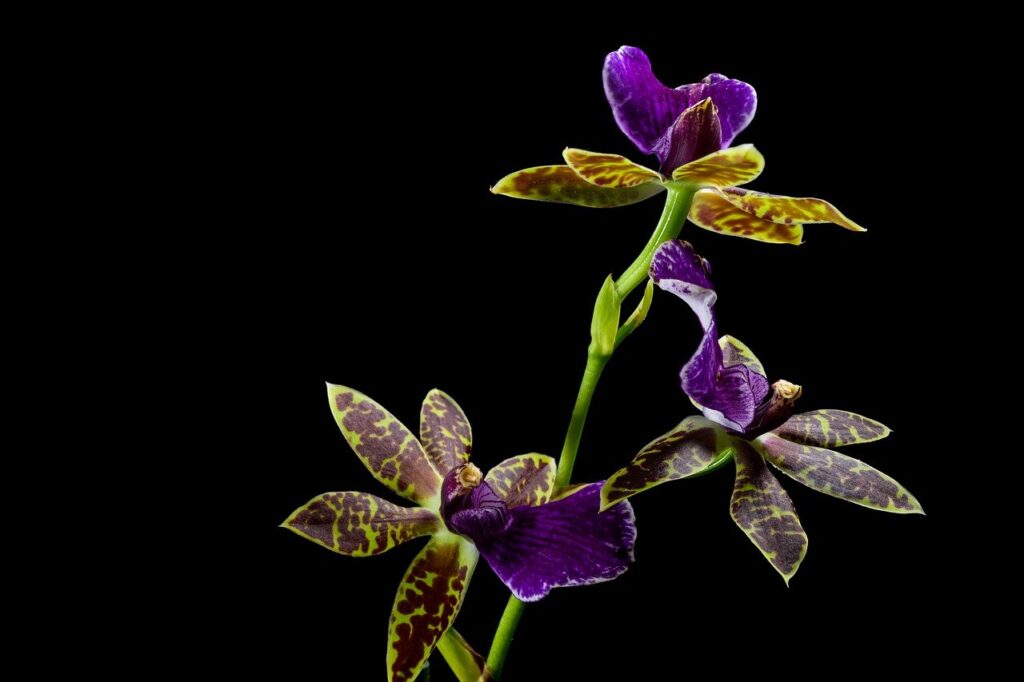
Addressing Growth Issues
Sometimes, your bare root orchids may not be growing as well as you’d like. Here are some common growth issues and how to address them:
- Lack of Growth: If your orchid is not growing, it may be due to a lack of nutrients or light. Ensure your orchid gets enough fertilizer and is placed in a well-lit area.
- Yellowing Leaves: Yellowing leaves may indicate a lack of water or nutrients. Make sure your orchid is getting enough water and fertilizer.
- Stunted Growth: Stunted growth may be caused by a lack of light or too much fertilizer. Make sure your orchid is getting enough light and is not overfertilized.
How To Propagate Succulents From Leaves And Stem Cuttings.
Frequently Asked Questions
Can you grow orchids without pots?
Yes, you can grow orchids without pots. This method is called bare root orchid growing. It involves removing the orchid from its pot and growing it without soil or a container.
Can an orchid live with only air roots?
Yes, orchids can survive with only air roots. Many orchids in the wild grow this way. Air roots absorb moisture and nutrients from the air and surrounding environment.
Can you mount orchids on rocks?
Yes, you can mount orchids on rocks. This is a popular method of bare root orchid growing. The orchid is attached to a bark or a rock using wire or string. This allows the orchid to grow without soil or a container.
How often do you water bare root orchids?
Bare root orchids should be watered when the roots are dry. Depending on the orchid species and environment, this can range from every few days to once a week. It is important not to overwater bare root orchids, which can lead to root rot.
How to water bare root orchids?
To water bare root orchids, soak the roots in water for 10-15 minutes. Allow the roots to drain before placing the orchid back in its growing location. It is important to use room-temperature water and not to let the orchid sit in standing water.
Can you grow orchids in water beads?
Growing orchids in water beads is possible, but it can be difficult. Water beads can retain too much moisture and lead to root rot. If you choose to grow orchids in water beads, it is important to monitor the moisture level and ensure the roots are not sitting in standing water.
